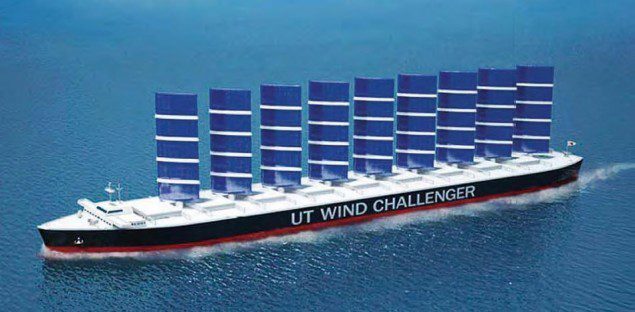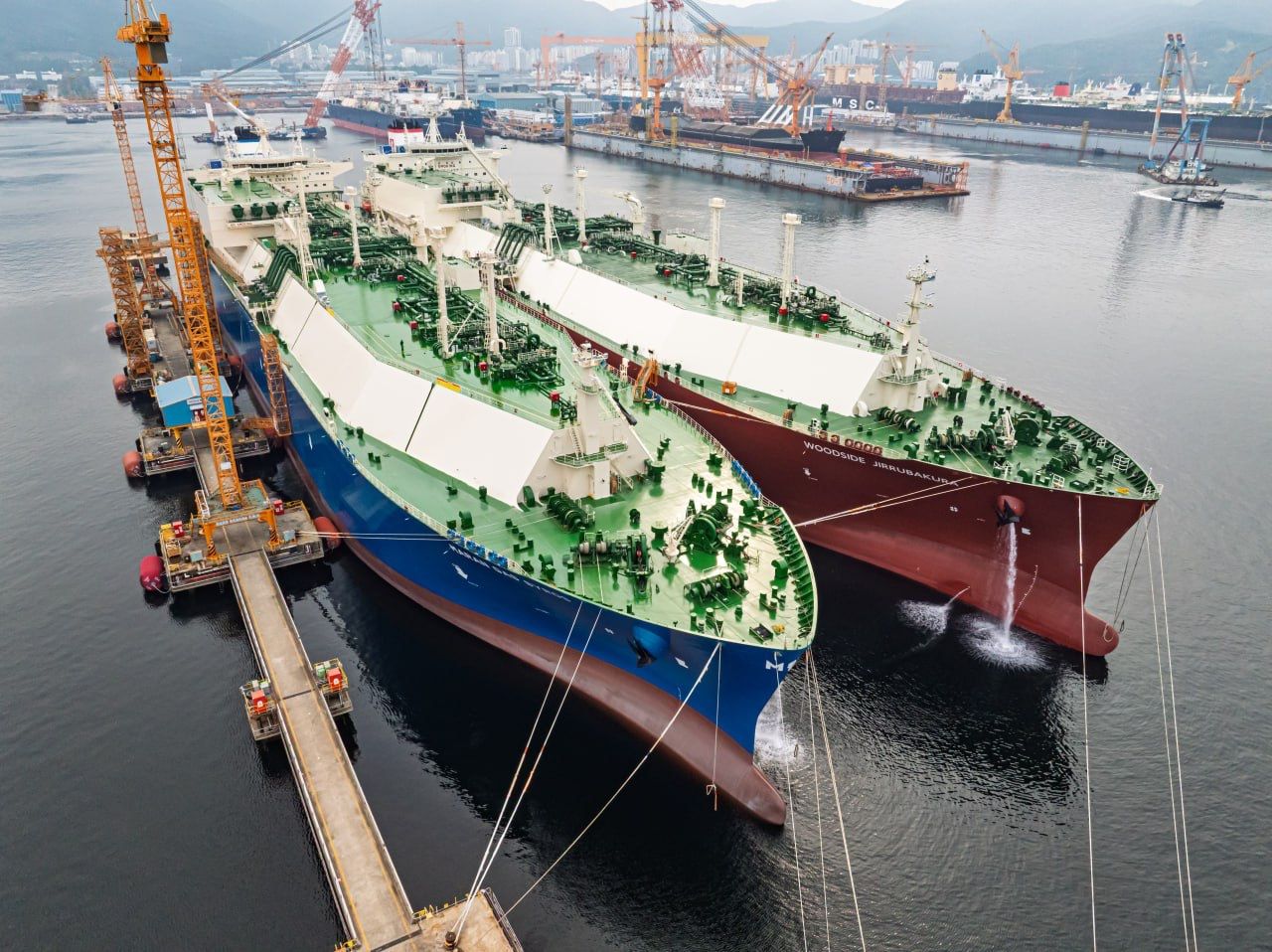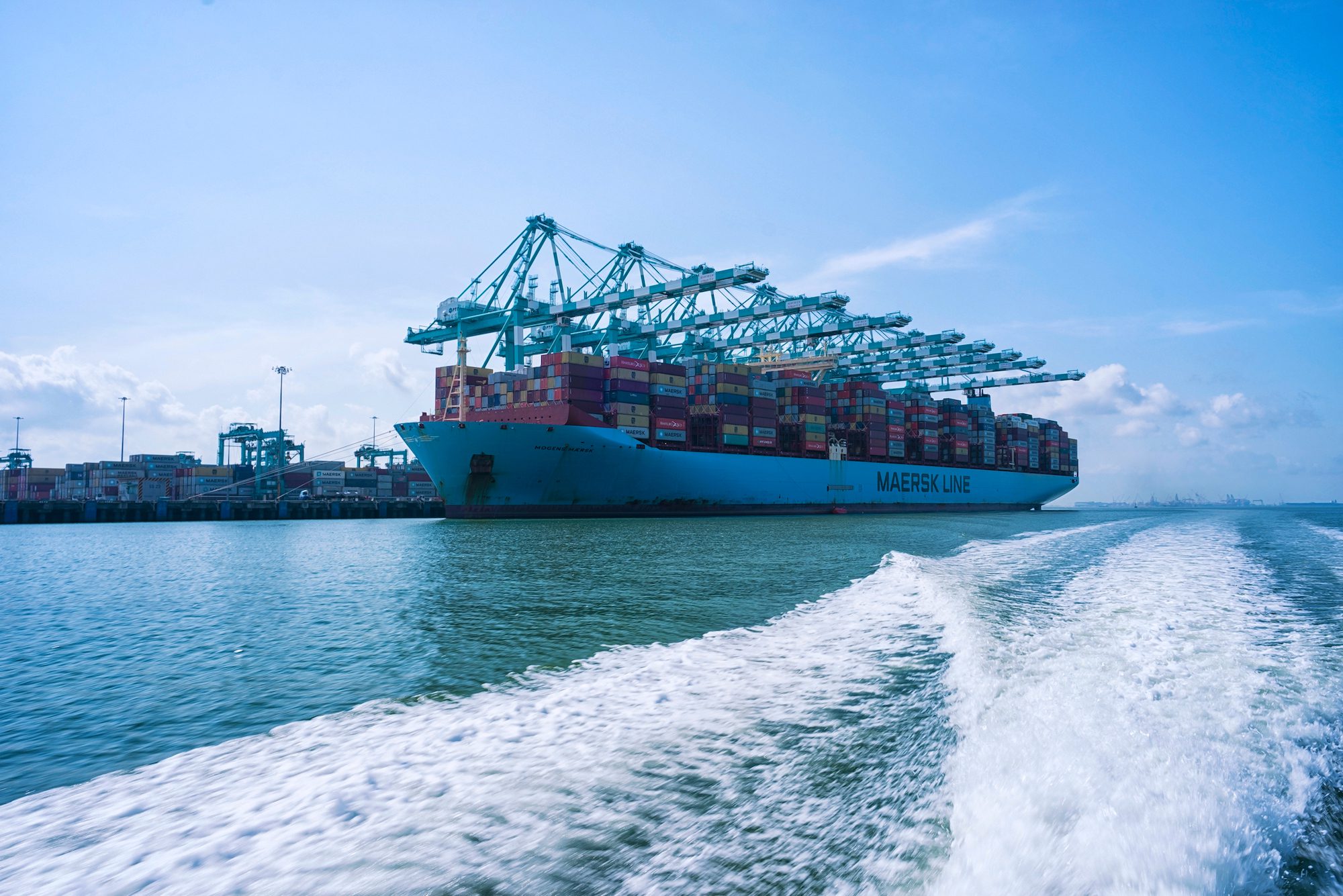Image (c) Rob Almeida/gCaptain
As the shipping industry endeavours to conserve expensive fossil fuels, cargo ship designers are now turning to the oldest source of power there is: the wind – but can the power of the past move the shipping fleets of the future?
Wind power could be making a radical comeback within the shipping industry. A drive for fuel efficiency and new forms of marine propulsion is transpiring within the shipping industry in the midst of the highest bunker fuel prices to date, an era of technological innovation is nigh. Bunker costs, the largest share of a ship’s operating costs, are rising steeply and have risen by 600% in the last 10 years.
Environmental legislation and regulatory pressures, namely those relating to air emission control, are also forcing vessel owners and charterers to look at clean technology solutions.
The North American Emission Control Area (ECA), under the International Convention for the Prevention of Pollution from Ships (MARPOL), came into effect from 1 August 2012, bringing with it stricter controls on emissions of sulphur oxide (SOx), nitrogen oxide (NOx) and particulate matter for ships trading off of the coasts of Canada, the United States and the French overseas collectively of Saint-Pierre and Miquelon.
Under this regulation, vessels within a 200 nautical mile radius around North America are required to burn low-sulphur oil, which already can cost 60% more than bunker fuel. What’s more, the IMO is also phasing in tighter and tighter regulation on greenhouse gas emissions which will be likely to also raise fuel costs indirectly.
Wind power is attractive because it is both cost and emission-free although, with the exception of very few for smaller vessels, none of the designs currently under consideration within the industry would completely replace a ship’s engine, only supplement it.
Applicability for the commercial fleet?
Whether or not wind energy can really power modern cargo ships is a question to which the industry seeks to find a definitive answer; many shipping companies are already experimenting with adding sails to cargo vessels.
“There are a number of projects looking at the use of wind as a power source for shipping,” said Craig Eason, technology editor at the shipping newspaper Lloyd’s List talking to the New York Times. However, there are hurdles to overcome before these technologies become widespread.”Whether these projects will prove to be successful business ventures remains a question” Eason stated.
Several key challenges stand in the way. First, wind power is not practical for large vessels like container ships, which sail faster than 15 knots and need to use their deck space for cargo. Second, based on current designs, wind power can only supplement the main propulsion system of ships rather than replace it. Third, ship owners don’t necessarily pay for their ship’s fuel; charterers do instead. There is little incentive to make an energy-saving investment if the owner does not benefit financially.
However, wind is well suited for smaller, slower-moving ships, such as those in the 3000-to-10,000-tonne range; such ships account for 10,000 vessels, one-fifth of the world’s total cargo ships, and are an essential link in the global supply chain so the market for wind power is still substantial.
For these ships, the most attractive systems are hybrid systems. These use the surface area of a sail to collect the energy of the sun as well as the wind, and offer higher fuel savings due to the fact that they utilise two energy sources rather than one.
These include the UT Challenger from the University of Tokyo, with five 55m-high sails made of reinforced aluminium and plastic; a 100-metre, 3,000-tonne zero-emission cargo carrier vessel from B9 shipping; and automated kite-sails from Skysails that expect to save between 10-35% on fuel costs.
Leading the technological revolution
The new vessels, mainly still on drawing boards and in prototype, look nothing like the graceful schooners and galleons of centuries past.
Last spring, the University of Tokyo unveiled a model of its hybrid freighter, the UT Wind Challenger at the Sea Japan trade show. It has nine masts, each 164 feet tall, with five rigid sails made of aluminium and fibre-reinforced plastic; consisting of five sections, they would be individually controlled by motors to automatically catch the wind at the best angle.

At $2.5 million apiece, the cost of the UT Wind Challenger sails could be recovered in five to ten years assuming 25% fuel savings, according to Uzawa. He plans to build a half-size prototype vessel and sea trials as early as 2016.
Then there is the 328-foot, 3,000-ton cargo carrier being designed by B9 Shipping, part of the B9 Energy Group in Northern Ireland. Its three masts rise 180 feet and the vessel is powered by a combination of wind and a Rolls-Royce biogas engine, it is intended to operate with no fossil fuels.
A model of the B9 ship was tested last month at the University of Southampton in England. “The tests were promising,” said Diane Gilpin, a founder-director of B9 Shipping. “They validated the economic case for deploying a B9 ship on certain trading routes.”
The next step, she said, is to seek financing for a full-size ship to demonstrate the technology. It would cost $45 million and take three years to build.
Two innovative companies are currently exploring the technical potential of not only wind power but also the production of electricity through the development of onboard sail systems that capture both the wind and sunlight and are applicable to commercial ships; initial modelling suggests that these technologies could save up to 20-40% on fuel costs.
The first is SolarSailor, based in Australia, and the second is Eco Marine Power, based in Japan.
Both companies have designed and manufactured sets of panels that are coated with solar cells and are positioned on-deck. These panels are controlled by automated software and can be angled and tilted to maximise the joint exposure to the sun and wind at once. The solar cells have the extra advantage of being able to be used even when the ship is docked.
Use of the SolarSailor system, SolarSails has so far been restricted to passenger vessels. Six ferries currently use SolarSails; a 100 passenger ferry in Sydney Harbour has been operating since 2000, a similar vessel is operating in Shanghai, and four more are currently running on a single route in Hong Kong. A design for a 600 passenger ferry is currently being developed for a passenger route in San Francisco.
The feedback from the existing operations is positive. The Hong Kong vessels save 8-17% on fuel costs depending on the route. However, repair and maintenance costs are greater than anticipated.
“There’s a learning curve for them and the new technology,” says the founder of SolarSailer, Robert Dane.
A feasibility study is also underway to test the applicability of SolarSails to commercial ships. An 800sqm installation is being proposed for a route between the Australian ports of Kimberley and Perth, and this system has an expected payback of just 2-3 years. The company expects savings of 20-40% on fuel costs for a ship travelling at 16 knots.
The second, Eco Marine Power’s EnergySail, is a system that can be fitted on anything from large bulk ore carriers to cable-laying ships, ferries, and coast guard patrol vessels, according to the company.
Large vessels such as oil tankers could see annual fuel savings of 10 to 20%. But when combined with optimized hull design, fuel cell technology, waste heat recovery, and an advanced electrical propulsion system, the EnergySail setup could generate fuel savings of 40% or more depending on the type of vessel, Eco Marine Power says.
Testing of the EnergySails system is also ongoing. “We have started testing in a lab in Osaka and we will bring in other components of the system” says Greg Atkinson of Eco Marine Power. “At the moment, we are focused on the control system and command interface testing.” The company expects that this technology save 10-20% of the fuel costs for oil tankers, although the technology can also be applied to large bulk carriers, cable-laying ships, ferries and coast guard patrol vessels. Sea trials of the EnergySail system could start as early as 2013.
Wind has been shown to be an effective cost-cutter with the MS Beluga SkySails, which completed a two-month sea voyage with a kite system in 2008, saving about $1,000 a day.
One company that is well past the design stage is SkySails. Founded in 2001 in Hamburg, Germany, it has been selling automated towing kite systems for cargo ships for several years.
Resembling a giant paraglider, SkySails’ 3,500-square-foot kite is launched from a ship’s bow, pulling it forward when the wind is right. The company says that depending on wind conditions, fuel consumption can be reduced 10 to 35%. SkySails has installed its giant kites on six ships, and Cargill, the world’s largest charterer of dry bulk carriers, has announced plans to install the latest SkySails technology this year on its ship the Aghia Maina.
The potential of all aforementioned systems is certainly promising, however wind-powered technology faces a steep development curve before the industry will be ready to fully embrace it.

 Join The Club
Join The Club












